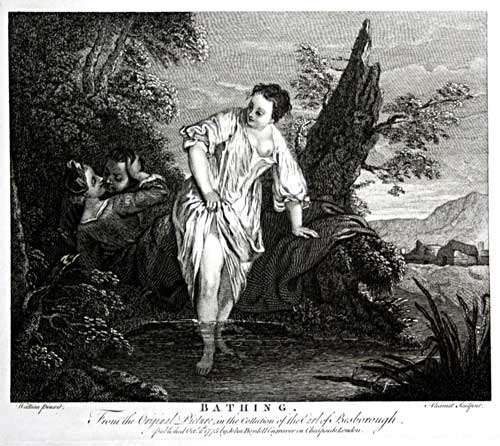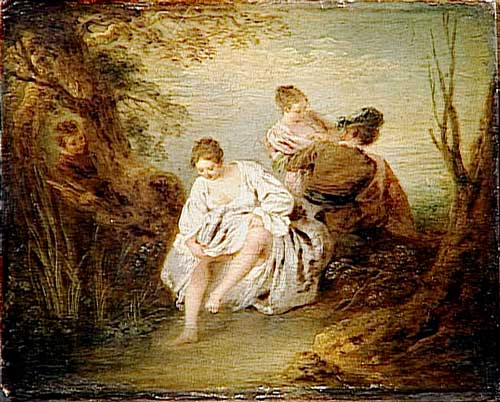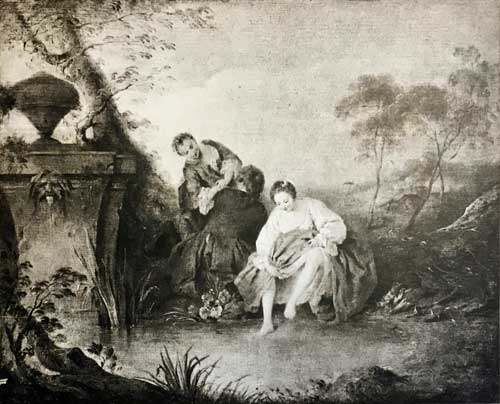
- Home Page
- Accepted
Paintings & Copies - Doubtful
Attributions - Doubtful Textual References
- Alternative
Titles - Collectors &
Museums - Bibliography
- Search Abecedario
- Watteau &
His Circle
X. Bathing
Entered September 2017

Whereabouts unknown
Material unknown
Measurements unknown
ALTERNATIVE TITLES
A Lady Bathing
RELATED PRINTS

François Germain Aliamet after “Watteau,” Bathing, 1755, engraving.
The painting and its pendant, The Bathers, were engraved in reverse by François Germain Aliamet (1734-1787) in October 1775 for the London publisher John Boydell. At the lower left it states “Watteau pinxit.”
PROVENANCE
London(?), collection of William Ponsonby, 2nd Earl of Bessborough (1704–1793. The Earl’s ownership is stated on Aliamet’s engraving. The picture passed by descent in his family.
West Hill, Wandswoth, collection of the John George Brabazon Ponsonby, 5th Earl of Bessborough; his sale, London, Christie’s, July 10, 1850, lot 169: “Watteau . . . . Figures, in a landscape; and a lady bathing—a pair.” Sold for £23.12.6 the pair according to an annotated copy of the sale catalogue in the Rijksbureau voor Kunsthistorische Documentatie.
Collection of E. Bolton in 1927. This provenance comes from Sir Robert Witt, as noted by Ingersoll-Smouse.
SELECT BIBLIOGRAPHY
Ottley, Notices of Engravers (1831), “Aliamet.”
Dacier, Vuaflart, and Hérold, Jean de Jullienne et les graveurs (1921-29), 1: p. 266, cat. 317.
Ingersoll-Smouse, Pater (1928), under cat. 304.
REMARKS
This picture and its pendant are not by Watteau as was claimed in the eighteenth and nineteenth centuries but are by his pupil, Jean-Baptiste Pater or his shop. This was recognized by Dacier, Vuaflart, and Hérold, and by Ingersoll-Smouse.
In all likelihood, this painting and its pendant appeared under Watteau’s name in one or more of the London eighteenth-century sales but their vague listings as scenes of women bathing do not allow any more precise identification.
Unlike its pendant, there are no other painted versions by Pater or his shop corresponding exactly to this composition. But there are at least two works which in their general format are closely aligned with Bathing. One is in the Louvre and the other was in the Levesque collection (sold March 27-28, 1914, lot 11). Both are horizontal compositions depicting a female bather seated (not standing) on the edge of the stream, and an amorous couple embracing behind her. Also, the Louvre painting, like Bathing, includes a prominent gnarled tree stump.

